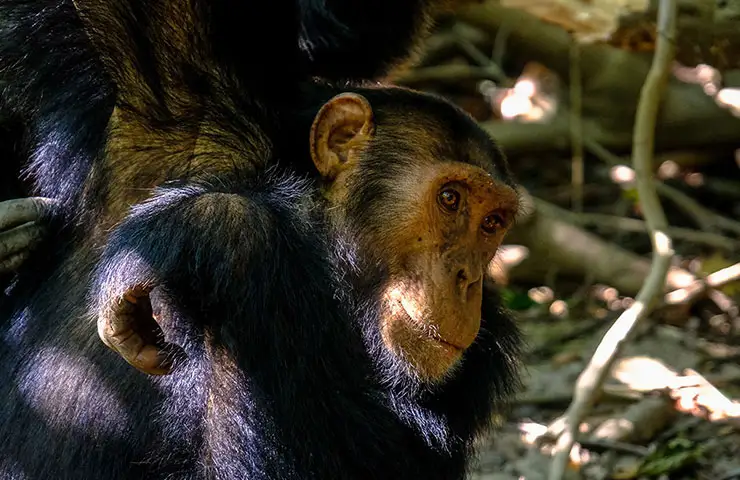How many primates are there in Nyungwe National Park, which is located in the southwestern part of Rwanda, is a biodiverse haven that boasts a remarkable array of flora and fauna. Among its rich wildlife, one group of animals stands out: primates. Nyungwe National Park is home to a diverse primate community that includes several species, making it a prime destination for primate enthusiasts and conservationists alike. Nyungwe hosts thirteen different species of primates, making it a critical hotspot for primate diversity and research.
About Nyungwe Forest National Park
Nyungwe National Park covers an area of approximately 1,020 square kilometers, making it one of the largest protected montane rainforests in Africa. This vast expanse of pristine forest provides an ideal habitat for a variety of primate species. Among the most iconic primate species found in Nyungwe National Park is the chimpanzee (Pan troglodytes).
Chimpanzees are our closest living relatives and share nearly 99% of their DNA with humans. Their social and cognitive abilities, complex communication, and tool-making skills have captivated the scientific community and visitors alike. Chimpanzee tracking and habituation programs in the park offer unique opportunities to observe and learn about these fascinating creatures.
The park is also home to a diverse range of monkey species. The L’Hoest’s monkey (Cercopithecus lhoesti) and the Angola colobus monkey (Colobus angolensis) are two primate species that particularly stand out. L’Hoest’s monkeys, also known as mountain monkeys, are known for their striking white beards and dark fur. Meanwhile, the Angola colobus monkeys are instantly recognizable by their elegant black and white fur, long tails, and expressive faces. and other monkeys found in Nyungwe include the owl-faced monkey (Cercopithecus hamlyni), the vervet monkey (Chlorocebus pygerythrus), and the Dent’s mona monkey (Cercopithecus mona denti). Each of these species has its own unique characteristics and adaptations to the forest environment.
Other primates in Nyungwe National Park
In addition to these, Nyungwe National Park is also home to a range of smaller primates, such as the golden monkey (Cercopithecus kandti), which is a visually stunning species with bright orange fur on its back. This particular primate species is endemic to the Virunga Massif, which includes Nyungwe and the neighboring Volcanoes National Park.
The presence of multiple primate species in Nyungwe National Park is of significant ecological and scientific value. It reflects the park’s health and the intactness of its ecosystems. The diverse primate species act as vital indicators for the overall well-being of the rainforest, helping researchers and conservationists monitor the environment’s health.
How many primates are there in Nyungwe National Park
Furthermore, the park’s primate species contribute to ecotourism, playing a substantial role in Rwanda’s conservation and sustainable tourism efforts. Revenue generated from primate tracking permits and guided tours aids in the protection of the park and provides valuable resources for local communities, which incentivizes conservation efforts and promotes the preservation of the park’s delicate ecosystem.
In conclusion, Nyungwe National Park in Rwanda is a primate enthusiast’s paradise, housing an impressive array of thirteen primate species. From the charismatic chimpanzees to the captivating Angola colobus monkeys and the rare grey-cheeked mangabeys, Nyungwe’s primate diversity is a testament to the park’s ecological importance and rich biodiversity.
Conservation efforts in Nyungwe not only protect these primates but also promote sustainable tourism, benefiting local communities and contributing to the global effort to safeguard our natural heritage. With its lush rainforest and remarkable primate population, Nyungwe National Park remains a vital sanctuary for these incredible creatures and a treasure for those who visit.

